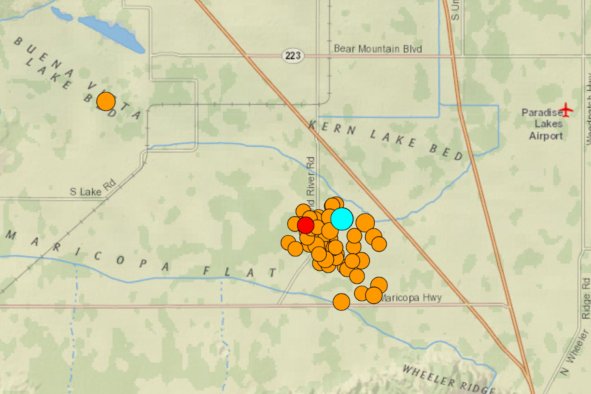Two of Texas's most important reservoirs are seeing lower water levels than ever before.
The Falcon International Reservoir and the Amistad International Reservoir, both reservoirs of the Rio Grande along the Texas-Mexico border, have been dropping in water levels in recent months, approaching their lowest-ever levels.
This may largely be due to drought conditions that have been plaguing the region for years.
As of August 7, Amistad is 25.2 percent full with a water level of 1,048.77 feet above sea level, while Falcon is 13.3 percent full at 255.51 feet above sea level.
On this date last year, Amistad was at 1,066.54 feet, while Falcon was at 259.28 feet. Amistad hit a record-low of 1,047.15 feet on July 17 this year, beating the previous record of 1,052.48 feet seen in August 2022.
The Amistad Dam and the Falcon Dam, which contain these reservoirs, were collaborative efforts between the United States and Mexico. They were built to provide flood control, water storage, and hydroelectric power. A 1944 treaty determined the two nations' contributions to the reservoirs, which are still overseen by the International Boundary and Water Commission (IBWC).
These reservoirs are responsible for providing water to the millions of people across the entire Rio Grande Valley.
The U.S. and Mexico both have to input water into the reservoirs and while Mexico does owe the U.S. significant amounts of water, both of these reservoirs are receiving less water from the U.S. side than they did in the 1980s, according to an upcoming report by the IBWC.
The report reveals that between 2011 and 2020, Amistad saw 33 percent less water flowing into it than between 1981 and 1990, which equates to around 4.6 million acre-feet less. During these same decades, Falcon received 21.5 percent less water, according to the IBWC research, Texas Tribune reported.
This decrease in water flow may be caused by the megadrought that has been scorching the U.S. southwest area for decades. This drought has also been causing other reservoirs, like Lake Mead and Lake Powell—both on the Colorado River—to drop.
"The drought started around the turn of the century and has carried on pretty much unabated since then, with only limited rainfall providing some relief in some parts," Cloke said.
"This region of the Americas has experienced long periods of drought before, with perhaps two or three megadroughts each century over the past 2,000 years. But this megadrought stands out from the record as being particularly long-lasting," Hannah Cloke, a professor of hydrology at the University of Reading, previously told Newsweek.
While periods of heavy rain may refill reservoirs, the drought conditions of the area rapidly dry them back out again. This can have major impacts on the surrounding areas that rely on the reservoirs for water.
"The impacts of severe drought can have enormous consequences on agricultural ecosystems and water supplies, including declining productivity and reduced groundwater and reservoir supplies that supply fresh water to cities and towns," Erica Smithwick, a professor of geography at Penn State, previously told Newsweek.
Climate change is expected to increase temperatures and change rainfall patterns across the Southwest, exacerbating the drought and its effects.
"Experts estimate that a large part of this loss in flow we're seeing can be attributed to higher temperatures in the region, a result of human-caused climate change. This was not the case with previous comparable droughts (like in the 1950s), which were primarily caused by lack of precipitation. With climate change, temperatures are likely to continue to increase, exacerbating the risks for such prolonged droughts," Antonia Hadjimichael, an assistant professor in geosciences at Penn State University, previously told Newsweek.
In addition to the drought, Mexico also owes the U.S. significant water contributions to the reservoirs. Under the 1944 treaty, Mexico is expected to contribute 1,750,000 acre-feet of water from its Rio Grande tributaries every five years. However, they are about 900,000 acre-feet behind and have until October 2025 to send it.
The drying of the Falcon and Amistad reservoirs may mean that local water suppliers need to look elsewhere.
"This is something they really need to look at, as far as how they're going to build drought resiliency in the region," IBWC Commissioner Maria Elena Giner said, as reported by the Texas Tribune.
Do you have a tip on a science story that Newsweek should be covering? Do you have a question about reservoirs? Let us know via science@newsweek.com.
Disclaimer: The copyright of this article belongs to the original author. Reposting this article is solely for the purpose of information dissemination and does not constitute any investment advice. If there is any infringement, please contact us immediately. We will make corrections or deletions as necessary. Thank you.




